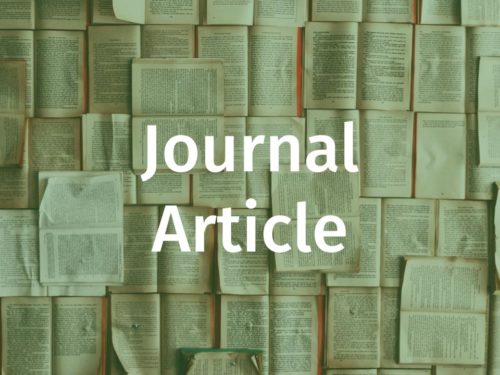The world’s mineral resources are limited and the extraction and consumption of minerals has expanded dramatically during the recent years. The current pace of expansion pace has brought the depletion of ores nearer, for example Steel manufacturers consider that high-quality iron ore would last for 30-50 years. In Finland leading politicians have said that the mining industry should be looked at in a long-term perspective, but meaning however only the next 30 years. The current generation is depleting the future generations’ right and share of the resources. New reserves can be found and technology be developed to extract and utilize low-quality ores, but these options are also limited.
Rising price is seen as a sign of a natural resources depletion. This, for instance, led China in the mid-2000s to start buying all the iron ore it could get. Besides steel production, it started to store ores for future use and export, as an investment whose value rises. The prices of natural resources declined for a long period in the 20th Century, but now a sharp turn has been experienced. For example, the world market price of iron ore is now at its all-time peak, at about 115 Euros per tonne. The profit margins on iron export are staggering, for example in India these are 80-90%. The extraction costs of iron ore (including salaries, machinery investment and other costs such as bribes and royalties but not transportation, of which the buyer takes care) in India are as low as 10 Euros per tonne, according to the local mining operators. Iron exporting has turned into one of the most profitable businesses in the world.
In this conjunction of rising prices and resource depletion, many countries, including in the global North (e.g. Finland), have allowed companies to export minerals asking for only very low royalties. It would be a good time to rethink on the nationalization of mines or at least to increase royalties substantially.
“Drink, eat and have merry today, forget about tomorrow”, so describes Ramchandra Singh Deo, an Indian politician from Chhattisgarh, the spirit of these days. Mining is the sale of wealth and property. Understanding this, many people in India have tried to stop the export of ores in the past years, realizing that soon they would have to buy back what they exported.
Countries may in the near future have to buy back, expensively, what they exported at the shortsighted pretext of creating a few thousand jobs and GDP increase. Governments and citizens should create a new, long-term mining policy. It is clear that the best investment now would be to hold on to mineral wealth.
In countries such as India and Brazil, the best remaining iron ore and bauxite reserves are located in the remotest forests with richest biodiversity and inhabited by indigenous populations. The same applies to other minerals, such as coal and gold. Extraction of these minerals inevitably means irreversible damage to nature as well as violent expulsion of people. Bauxite areas particularly are important water reservoirs that let out water into rivers throughout the year, also during drought. The environmental damages of mines spread to vast areas and are often seen only after some years of extraction. At this point, when agriculture and forest livelihoods have already been made impossible in the mining effected areas, the only option left for the locals is to accept the mining and the labour it provides.
All countries must be very careful about their mining projects. Mineral extraction and export have been very destructive almost everywhere. They have been correlated with increasing corruption, paying bribes to politicians’ secret bank accounts, corrosion of regulatory bodies, and increase in violence and human rights violations. No country, not even in the North, can hope to avoid this industry.
In Finland, national mining and metal production in value-adding industries was the base of mining industry, but this is now changing with the new mines. Multinational companies aggressively search for gold and other minerals from the depths of wilderness. People are talking about an arctic land grab, which is part of a global race to the last remaining resource peripheries, a category which Lapland has also been rendered into by the current mining policy.
Now is not the time to sell, extract, export or benefit. Now is the time to let minerals remain in the ground and stop expansion of production. Investments must be concentrated on the development of renewable resources and their sustainable and equitable use.
This requires building a new natural resource policy, which is human capital-intensive, providing jobs for the burgeoning human population in the countryside, and importantly on a long term. Once a mine is depleted the job-offering capacities of that natural habitat are gone. Where to go then?
The extraction pace should be set so that our generation would take only that part which belongs to it. (Many mining policy experts and activists in India argue that the safeguarding of mineral reserves should be calculated by at least 10,000 to 30,000 years. In the past two years, they have managed to close down through Supreme Court petitions most of the iron ore mines in Karnataka’s Bellary area and in Goa. The states are very important iron ore exporters in India. The same type of closing down of mining activities, due to illegalities and other problems, is happening through differing procedures and on different scales also in other Indian states. A similar large-scale stopping of mines has not been experienced anywhere else in the world, according to mining company directors.
This illustrates that in India activists and concerned citizens have managed to foster contentious agency and a judicial and political system that allows grassroots-level democratic steering of ecology in greater depth than in other countries, e.g. Brazil or even Finland. Seeing India in comparison to these countries’ natural resource politics, there is also a lot to be proud of in India. Particularly striking is the wide-spread contentious agency by people, active participation in politics, a legacy of mass movement based emancipation from colonialism, and sustained culture of questioning and political activism, among other things. This setting provides a good platform for developing a deeper notion of ecological democracy – given that the state is embedded by the contentious agency to a larger degree and to avoid state capture by the rising private interests.
The current generation must take the decision to also look into the future. For how long will people passively follow from the side the current mining rush, without understanding its real costs: a lost opportunity to ask and raise more fundamental questions about our human conduct and to provide future generations their share?
This article has originally been published on Ecological Democracy on May, 2nd 2013










